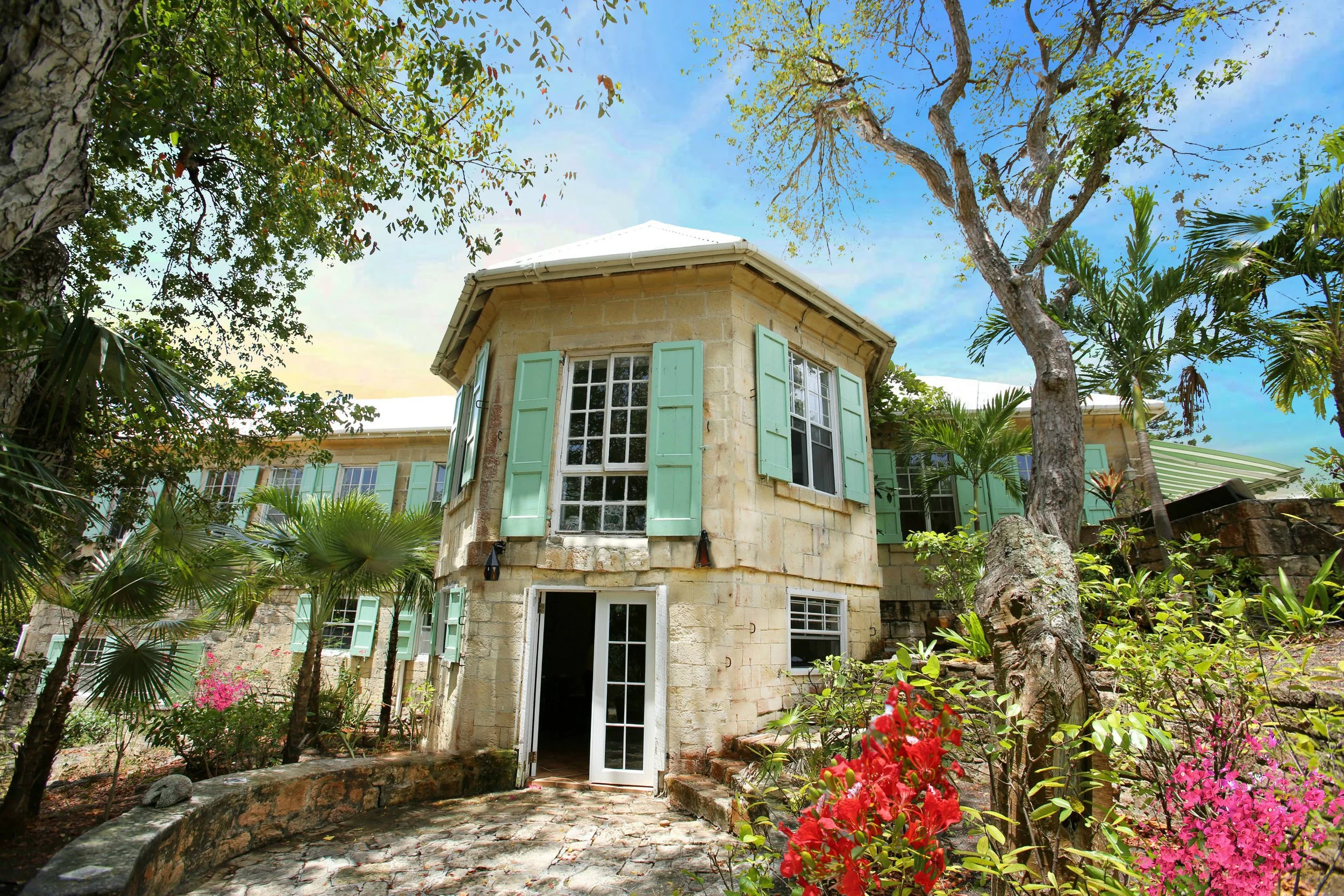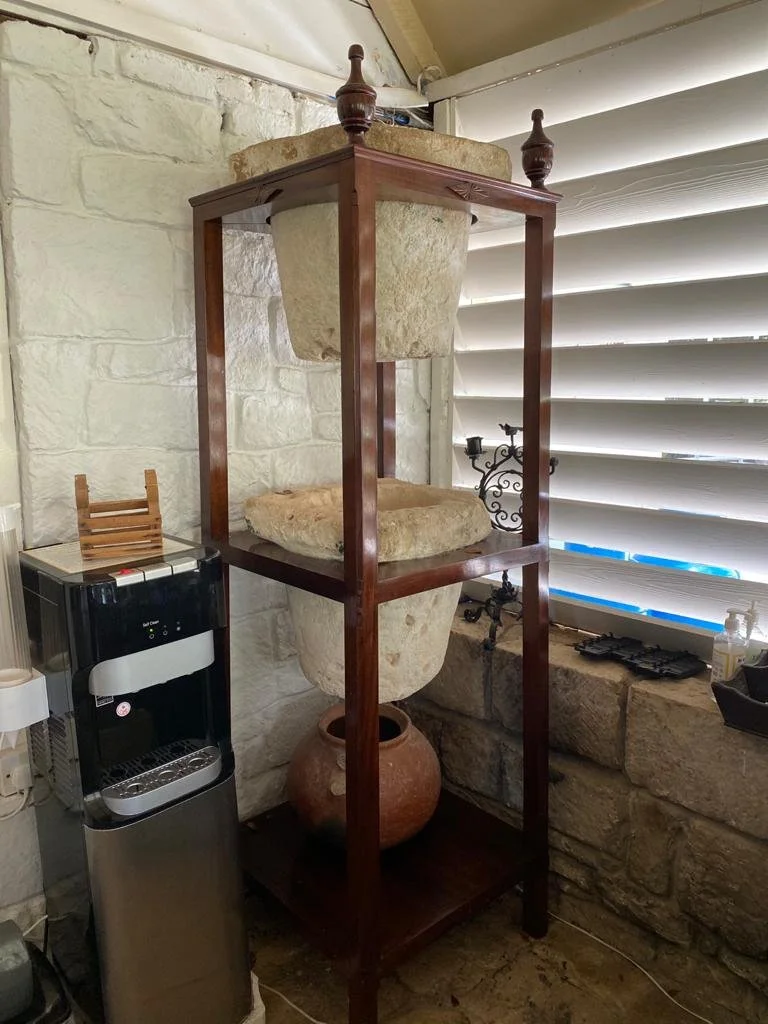Georgian Manors of the Caribbean Part 2
Gabriella Howell is a PhD student at The University of Buckingham, looking at the influence of Antigua, a Leeward Island, and former British colony, on the development of North Carolina and Virginia during the Georgian era. She is using the estate house, Mercers Creek, and the family associated with the estate as a microcosm example of the island's wider influence. Her academic work developed from the physical restoration undertaken on the property, including the restoration of Wedgewood and Chippendale furniture. Gabriella is currently Special Advisor to His Excellency, the Governor General of Antigua & Barbuda, working on the restoration of Government House. You can find part one of her post here.
Mercer’s Creek, Antigua
In a previous blog article, I address the work currently being undertaken at Government House of Antigua and Barbuda. Restoration is underway on the original enslaved quarters, which are thought to have been the oldest existing enslaved quarters in the Caribbean. The Museum of London will be visiting in 2024 to begin the museum development.
My interest and involvement in this project stemmed from my work in running a historic hotel on the island of Antigua, the Great House Antigua, a 350-year-old Sugar Buff house. The only stone Buff house still habitable on the island.
My grandparents moved to the island of Antigua in the 1960s to set up a manufacturing business. Purchasing the Buff House in the 1970s, they gradually began the restoration work to make it liveable for their family. In 2018 I converted the 26-acre family property into a boutique hotel. The U.S.P of the hotel is its history, which I had studied during my undergraduate and postgraduate degrees. Researching and writing the stories of those who had come before us, as well as the design of the house and its furnishings fascinated me and was a side hobby as part of the greater story of the property. In 2020 I decided to take this project and write academically about the significance and influence of this estate house and Antigua on the wider region. Not only was I surprised to discover the uniqueness of the property on the island and throughout the wider Caribbean region, but the lack of academic work which had been undertaken on the historic properties in Antigua. One of the most used sources for the island is Vere Langford Oliver, who passed away in 1942. (See Mitchell and Hughes, 1894)
Antigua & Barbuda National Archives Plan of Mercers Creek Division
The archives of Antigua & Barbuda which house; the Codrington papers, Assembly Minutes, indenture records, church records, slave lists and property records, were inaccessible for many years and thus rarely feature in any work written on the island. In 1649 Christopher Codrington (of Cheltenham) emigrated with his family to Barbados. In 1684 his son founded a sugar estate at Betty's Hope, Antigua. The papers of the Codrington family were deposited by Sir Simon Codrington at Gloucestershire Record Office in 1959 but withdrawn again in 1980 by the family and put up for sale. A campaign was launched to save the records relating to the family's domestic estates (the papers having been temporarily purchased by a sympathetic businessman with a view to encouraging such an appeal). Consequently, they were purchased by the Gloucestershire Record Office, where they are still held as the papers of the Codrington family of Dodington, 1462-1940 (ref. D1610). Original material relating to the family's estates in the West Indies was purchased at Sotheby's by a Swiss businessman on 15th December 1980 for 106,000, although the Gloucestershire Record Office holds microfilm copies. These papers are now held by the National Archives of Antigua. The academic work which is released, predominantly presents the perspective of Britain or North America on the Caribbean colonies, and not the influence and learnt skills of the colonists in Antigua on the development of the thirteen colonies of North America.
Water filtration frame
Though The Great House, Buff House researched in this thesis, originally known as Mercers Creek, has stood since 1660, my thesis focuses on the Georgian era. Specifically, I am looking at the influence of one family, the Farley’s, and lessons learnt on the island of Antigua which was taught and transferred to the North American colonies of North Carolina and Virginia. Francis Farley inherited the estate of Mercers Creek from his father-in-law Samuel Watkins, an influential member of Antigua’s society and leader of the Assembly on multiple occasions. The estate house was in the Farley family from the 1750s until the 1800s when it was purchased by the estate manager. The wealth available to sugar families in the Caribbean was significant, though it began dwindling during this time due to the rise in natural disasters; drought, disease and hurricane, as well as the threat of conflict and embargos with the North American colonies. Due to their wealth, the island's population were able to decorate their homes in the style of the homeland, England. The Georgian influence on the Buff house was showcased with the Sailor King, William IV, who was stationed in Antigua with Horatio Nelson. With the British colonists keen to have the King and his entourage in their homes, an additional wing was built on the Mercers Creek Buff House to give the outline of a ship's sail. There is no evidence that the Sailor King, the last of the Georgians, frequented the Farley residence and by this point most of the Farley family had moved to North Carolina and Virginia in a bid to protect the family’s wealth and continue to grow their assets. Other families who hosted the famous sailors noted the wild parties and damage done to homes, see J.W. Orderson’s Creolana or Social and Domestic Scenes and Incidents in Barbados in the Days of Yore (Macmillan Education, Oxford, 2002)
Water filtration limestone frame and filters
Francis Farley at this time had moved over 100 enslaved people from the Mercers Creek estate to his new land in Virginia, the Land of Eden, which neighboured the Dismal Swamp. My thesis focuses on the influence of this move, and the lessons learnt from the island, and implemented on these new lands during the changing North American colonies landscape, post the American War for Independence.
Mercers Creek is home to many rare furnishings on the island, an 1800 wrought iron four poster bed which was left on the island by a French emigree family, likely escaping persecution from one of the French islands, though it is likely they quickly found the British island unwelcoming. The Buff house also houses the original water filtration systems. The photos show the repair work undertaken on the frame which held the twin limestone filtrations, the last usable system on the island. Rum was safer than water during the times, it is noteworthy that though rum may no longer be safer than water on the island it certainly is cheaper.
Connect with Gabriella on LinkedIn
Finished water filtration system




